Where fire meets ice—And the earth breathes below
Iceland is no ordinary island. It's a land sculpted by the rawest forces of nature—where molten fire and ancient ice collide to shape a living, breathing landscape. Here, volcanoes don’t just sit on the horizon—they rise, crackle, and carve their stories into the very bedrock of the nation.
While many visitors marvel at Iceland’s geysers, waterfalls, and black sand beaches, few realise that some of its most jaw-dropping wonders lie hidden beneath their feet. Imagine walking through vast underground tunnels once filled with flowing lava or descending into the empty heart of a sleeping volcano. This is not fantasy—it’s Iceland.
Before venturing into this surreal subterranean world, take a moment to experience it from the surface—at Volcano Express. Located in Harpa Concert Hall in Reykjavík, this cinematic, full-sensory volcano show simulates the heat, tremors, and power of a real eruption. It’s the perfect way to ground yourself in Iceland’s fiery underworld—before stepping into it for real.
Explore Iceland’s Volcano Caves and Lava Tunnels
From echoing lava chambers to glittering ice-crusted tunnels, Iceland’s volcanic caves are portals into another world. Step inside these extraordinary formations to witness the quiet aftermath of fiery chaos—where the Earth once flowed like liquid flame, now frozen in breathtaking stillness.
Þríhnjúkagígur: Into the Volcano
It’s one thing to stand atop a volcano—but what if you could go inside one?
At Þríhnjúkagígur, just 30 minutes from Reykjavík, you can do exactly that. This is one of the only places on Earth where travellers can descend into a real magma chamber, emptied of its lava yet stained with the glowing reds, yellows, and purples of its molten past.
- The Descent: A glassy open cable lift takes you 120 metres down—deeper than the Statue of Liberty is tall—into a cavern the size of a football field.
- Where: Bláfjöll Mountain area, southwest Iceland.
- When: Open only in summer (typically May to October).
- Effort: Moderate. Includes a 45–50 minute hike across a lava field before the descent.
Tip: Book well in advance through tour providers like Inside the Volcano—this is a bucket-list experience that fills up fast.
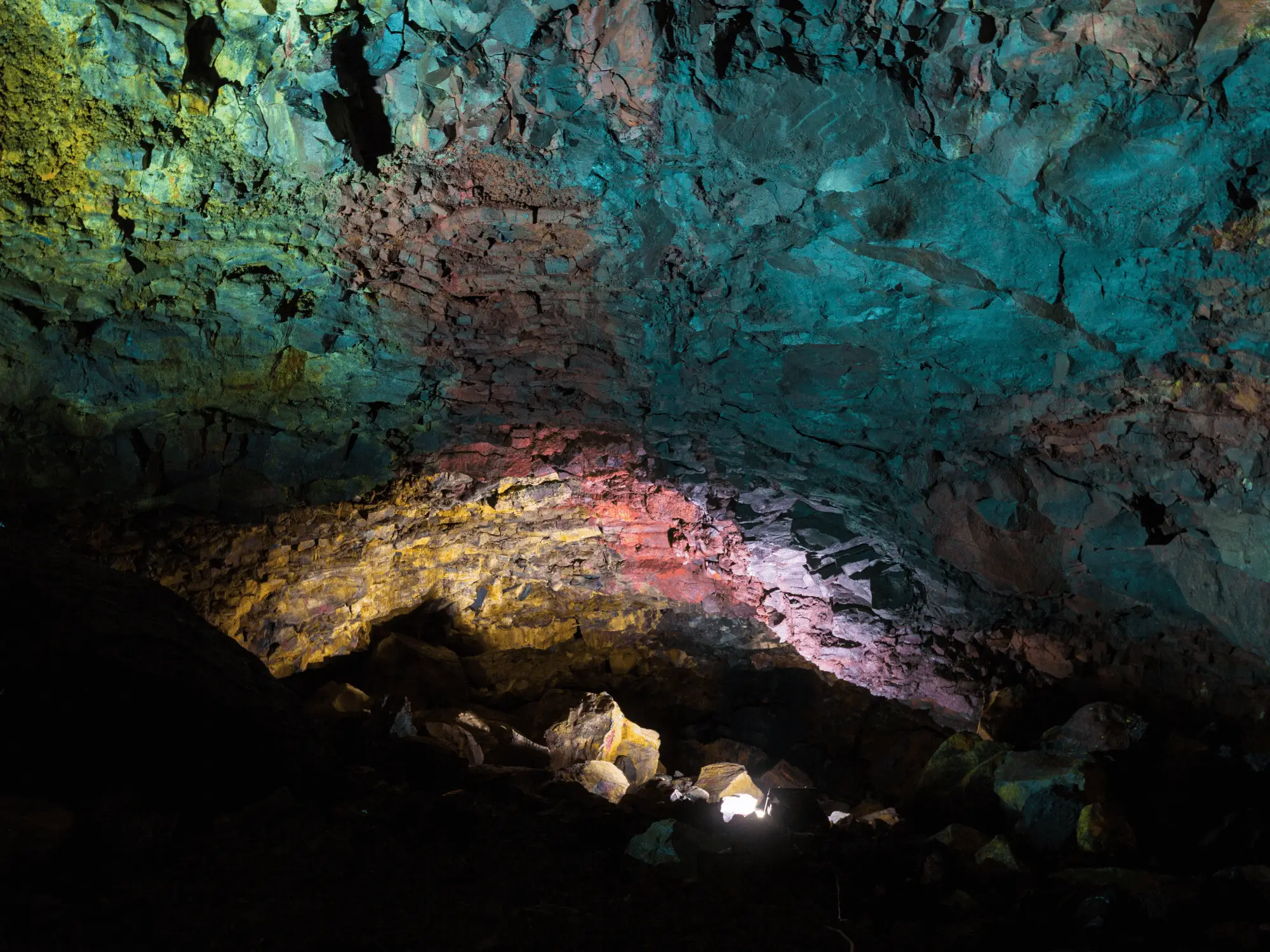
Want a preview before you go? The Volcano Express experience at Harpa offers stunning visuals and sensory effects that bring magma chambers like Þríhnjúkagígur to life—no hiking boots required.
Raufarhólshellir: The Lava Tunnel
If Þríhnjúkagígur is about depth, Raufarhólshellir is all about distance—and colour. This 5,200-year-old lava tunnel stretches nearly 1,400 metres, making it one of the longest and most accessible lava caves in Iceland.
- What to Expect: Swirling mineral hues, jagged lava formations, and dramatic light shafts from the cave’s collapsed ceiling. In winter, sculptural ice formations transform the tunnel into a frozen gallery.
- Location: Just 30 minutes east of Reykjavík.
- Tours: Standard tours follow a lit, guided path; more adventurous tours go deeper. All tours include helmets, lights, and crampons when needed.
Pro Tip: Morning light through the skylights creates surreal photo opportunities.
Want to understand how these lava tubes form? The immersive Volcano Express show demonstrates the lava flow dynamics that create tunnels like Raufarhólshellir—perfect pre-tour insight.
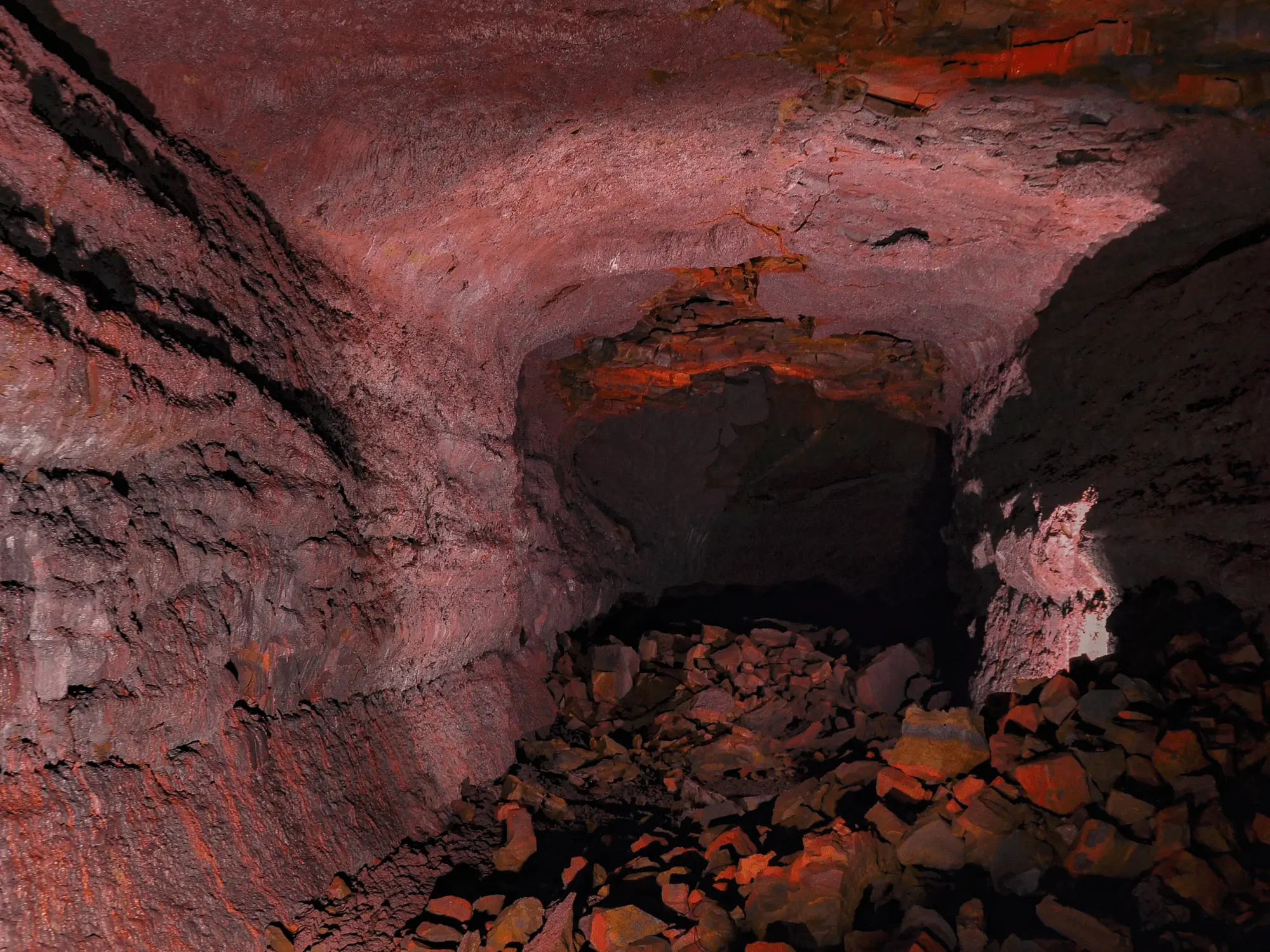
Víðgelmir: The mighty cave of the West
Located in the vast Hallmundarhraun lava field, Víðgelmir is Iceland’s largest lava cave by volume, and among its most captivating. It’s a place where geology and archaeology meet—where towering lava arches mingle with ancient human history.
- Highlights: Colossal caverns, intricate lava striations, and signs of settlement from centuries past, including bones and artefacts.
- Getting There: Near Húsafell, about a 2-hour drive from Reykjavík.
- Family-Friendly: Wide, stable walkways and lighting make it ideal for all ages.
- Guided Tours: Led by passionate local experts, with options tailored for families, students, or photographers.
While less surreal than Þríhnjúkagígur and less cinematic than Raufarhólshellir, Víðgelmir’s sheer scale and quiet grandeur leave a lasting impression.
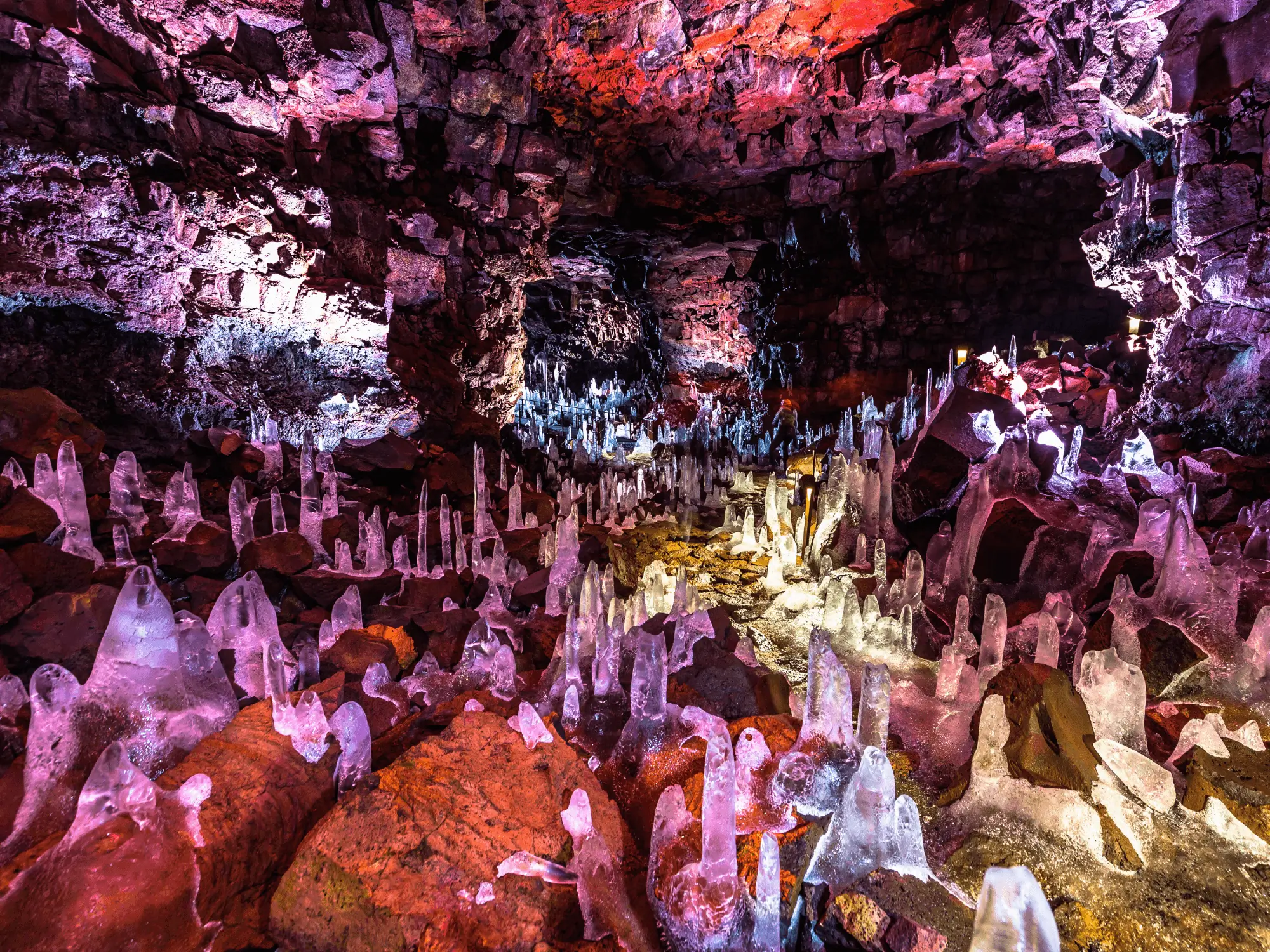
Off-the-path wonders: Lofthellir & Leiðarendi
Lofthellir
Deep in North Iceland’s lava wilderness, this cave is renowned for its ice sculptures and dramatic remoteness. Not easily reached—accessible only via rugged super jeep tours—but a dream for seasoned adventurers.
Leiðarendi
Closer to Reykjavík and less frequented, Leiðarendi offers intimate lava formations, collapsed ceilings, and twisted tunnels. A great alternative for those looking for raw beauty without the crowds.
These caves offer the perfect balance of accessibility and awe
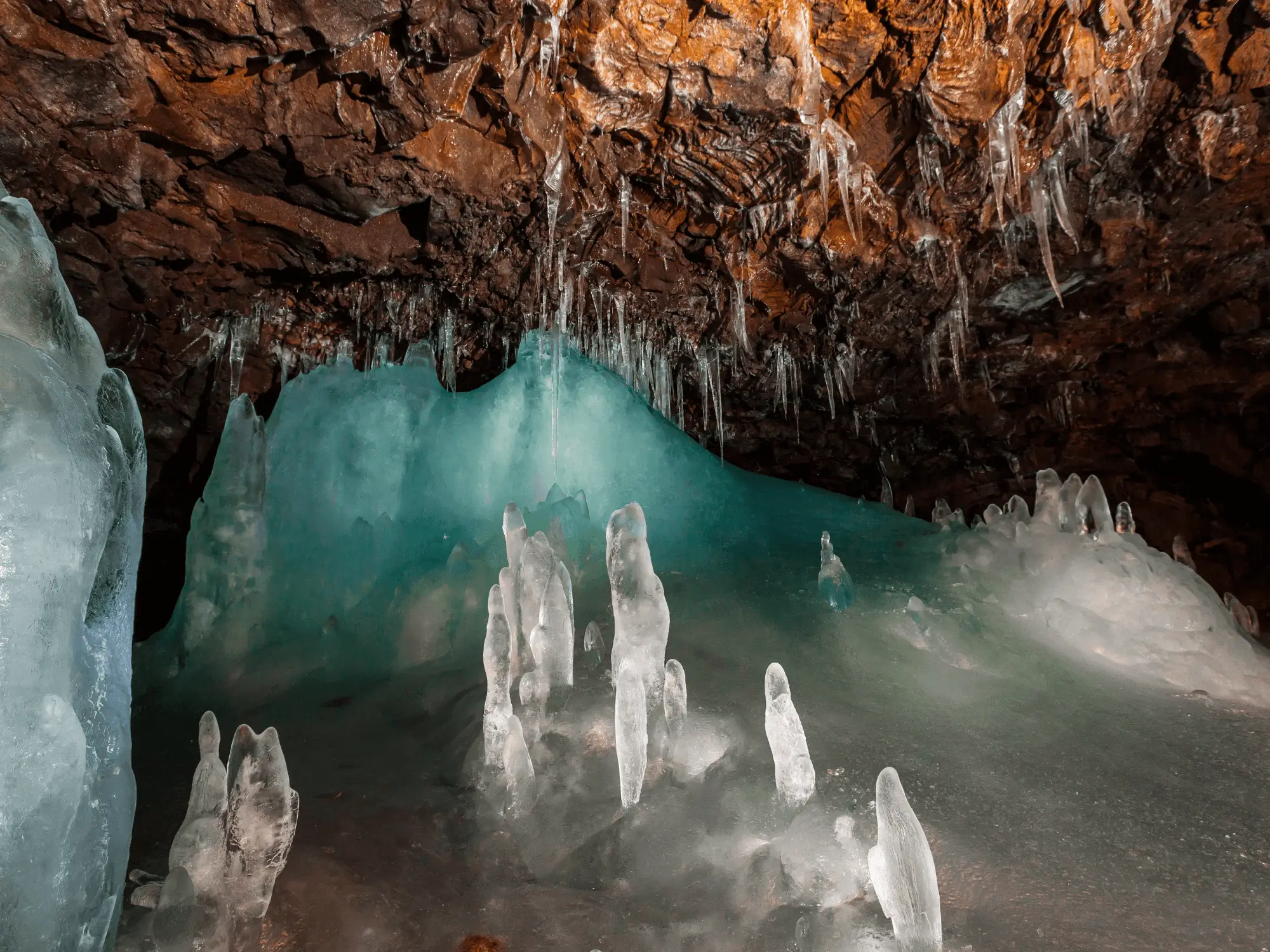
Why visit a lava cave?
Not all adventures roar with noise. Some echo with ancient silence—a silence forged by fire and preserved in stone.
Visiting a lava cave in Iceland isn’t just a sightseeing stop. It’s a descent into the island’s memory—into spaces where molten rivers once flowed beneath your feet. These underground chambers are more than geological oddities; they’re cathedrals of volcanic creation, shaped by pressure, heat, and time.
Here’s why these caves are unmissable:
- Walk through time – Each layer of rock and flow tells the story of eruptions long past.
- Otherworldly beauty – Ice crystals, lava striations, mineral rainbows—no two caves are alike.
- Immersive photography – Capture surreal textures and glowing light shafts you won’t find above ground.
- Hands-on learning – With guided tours, kids and adults alike discover how Iceland was formed from the inside out.
- Emotional awe – To stand in a space once filled with lava is to feel the Earth breathe.
And with Volcano Express, you can start the journey with a cinematic eruption, warming up your senses before you ever set foot underground.
Volcanic landscapes around the caves
Iceland's lava caves don’t exist in isolation—they’re part of a vast, dynamic system of volcanic landscapes that stretch across the country like veins of geological memory. Each cave is a remnant of a powerful eruption, shaped by pressure and molten flow, and each is connected to a nearby volcano that once roared to life, reshaping the land from within.
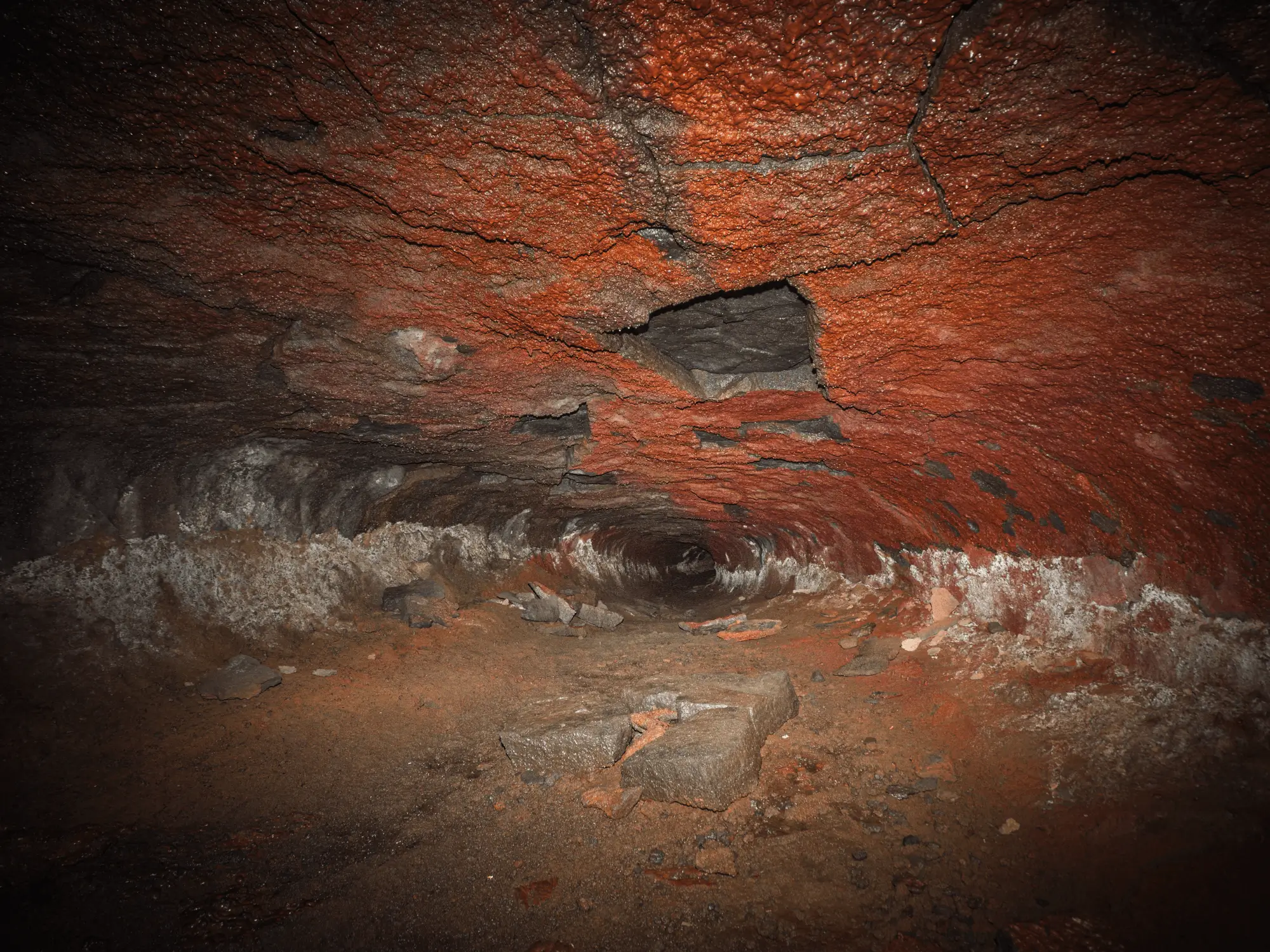
Hengill: The sleeping giant beneath the surface
Near Reykjavík and just north of the Þríhnjúkagígur magma chamber lies the Hengill volcanic system. Though dormant today, Hengill is geothermally active, its flanks dotted with steaming vents and bubbling hot springs. This area offers a glimpse into what happens after an eruption—when the heat remains long after the magma has cooled. Lava tubes near Hengill tell the story of earlier flows that once coursed just beneath the surface, carving out pathways before hardening into stone.
Hekla: The Queen of Icelandic volcanoes
To the southeast stands Hekla, one of Iceland’s most famous and active volcanoes. Known historically as the “Gateway to Hell,” Hekla has erupted more than twenty times since settlement, most recently in the year 2000. While it doesn't house tourist-ready caves, Hekla’s legacy is etched across the southern highlands, where its frequent lava flows have formed extensive volcanic fields—ideal conditions for the creation of lava tunnels.
Bárðarbunga: Power beneath the Ice
In the remote Highlands, buried beneath the Vatnajökull glacier, lies Bárðarbunga—a volcanic titan with a massive caldera and a reputation for powerful, prolonged eruptions. The 2014–2015 eruption at Holuhraun, connected to Bárðarbunga, produced Iceland’s largest lava flow in over 200 years. Although this region is less accessible, the sheer scale of lava output creates prime conditions for long lava tubes to form, later solidifying into the kinds of subterranean passageways found in the Hallmundarhraun field, where Víðgelmir lies today.
How lava caves and tunnels form
Lava caves are the product of very specific conditions—most often linked to basaltic eruptions that release low-viscosity lava, allowing it to move swiftly and smoothly across the land.
As the outer surface of a lava river cools, it begins to harden, forming a crust. Beneath this crust, molten lava continues to flow. If the eruption slows or stops and the lava drains from the channel, it can leave behind a hollow tube. These lava tunnels can stretch for hundreds of metres and retain heat for months or years after formation.
In other cases, lava pits, vents, or craters may collapse post-eruption, forming wide underground chambers. When conditions align—such as those that created Þríhnjúkagígur—a magma chamber may drain without collapsing, leaving behind a natural cavern of remarkable scale.
From the surface, the land may seem solid. But beneath your boots, Iceland’s volcanic architecture runs deep—carving cathedrals in stone, hidden until you're ready to step below.
Practical travel tips for visiting Iceland’s volcano caves
Exploring lava caves and volcano tunnels in Iceland isn’t just for hardened adventurers. With the right planning, guidance, and gear, these incredible subterranean spaces are within reach for most travellers. Whether you’re looking for a gentle introduction to volcanic landscapes or a full-scale descent into the Earth’s crust, here’s what you need to know before you go.
Choosing the right cave for your interests
Iceland’s lava caves range from family-friendly strolls to rugged, helmet-lit treks through tight tunnels and uneven ground. Selecting the right one depends on what kind of experience you're after.
• For Families and First-Timers: Víðgelmir and Raufarhólshellir are both guided, well-lit, and equipped with walkways—ideal for all ages and mobility levels.
• For Adventurers: Þríhnjúkagígur requires a moderate hike and includes a vertical descent into a magma chamber. Lofthellir and Leiðarendi are more remote and less developed, offering raw, natural beauty without handrails or lighting.
• For the Curious, Not Claustrophobic: Choose wide, vaulted caves like Víðgelmir, which feel more like underground cathedrals than tunnels.
What to wear and bring
Lava caves maintain a year-round temperature close to freezing, regardless of the weather above ground. Being properly equipped ensures comfort and safety.
• Layers: Base layer, insulating fleece or wool, and a waterproof outer layer are ideal.
• Sturdy footwear: Hiking boots or shoes with good grip are essential—cave floors can be uneven, wet, and slippery.
• Safety gear: Helmets and headlamps are provided on most tours. Bring gloves for added warmth and grip, especially in colder caves.
• Camera care: Bring a case or dry bag—some caves can be damp, and condensation is common.
When to go
Not all caves are accessible year-round, and seasonal changes can dramatically alter what you’ll see inside.
• Þríhnjúkagígur: Open only in summer, typically May to October.
• Raufarhólshellir and Víðgelmir: Operate year-round, with magical ice formations in winter and easier travel conditions in summer.
• Remote caves like Lofthellir: Best visited in summer due to challenging terrain and limited daylight in winter months.
Always check current access conditions, as weather and volcanic activity can occasionally affect operations.
Booking and safety
Guided tours are the only responsible way to visit Iceland’s lava caves. Not only do they ensure your safety, they also help protect these fragile geological environments.
• Book in advance: Popular caves—especially Þríhnjúkagígur and Raufarhólshellir—fill quickly, particularly in summer.
• Follow your guide’s instructions: Caves are unpredictable environments. Stick to marked paths and avoid touching formations to preserve them.
• Travel insured: If your itinerary involves remote areas, winter roads, or hiking, ensure your insurance covers adventure activities.
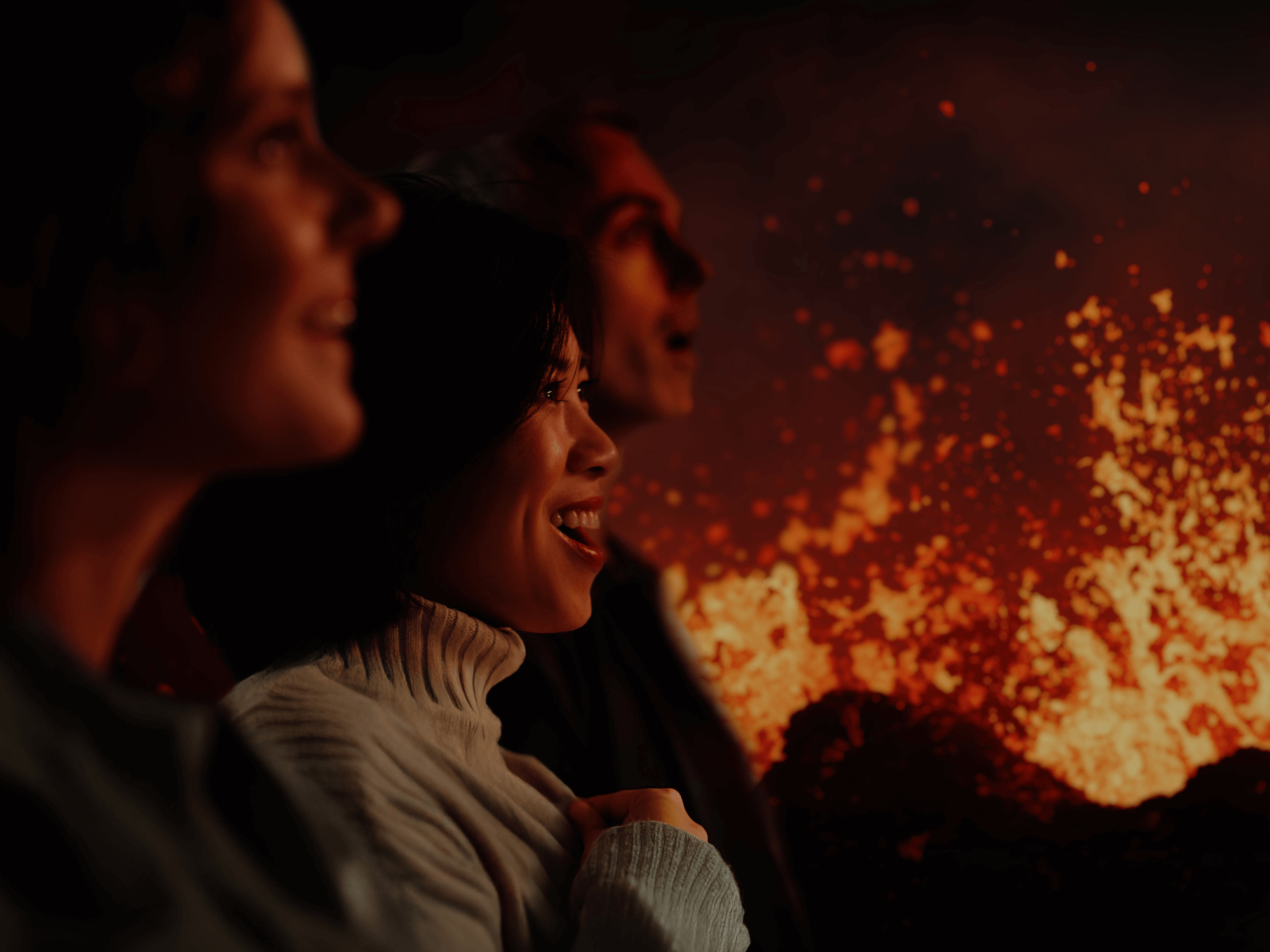
Volcano Express: Begin your adventure at Harpa
Before stepping into Iceland’s volcanoes and caves, prepare to experience them first—with all your senses. Located in Reykjavík’s iconic Harpa Concert Hall, Volcano Express offers a fully immersive journey into Iceland’s volcanic soul.
This is not a museum. It’s not a slideshow. It’s a sensory plunge into fire and earth—a cinematic, surround-sound, seat-rumbling simulation that captures what it’s like to stand at the edge of an eruption.
What awaits inside
The Volcano Express show is designed to do what no tour bus can: place you inside the eruption itself.
• 360° Visual immersion: Step into high-definition footage of eruptions, lava flows, and volcanic lightning, captured across Iceland’s most active zones.
• Sneak peak visit Into the Volcano: The ride goes through Þríhnjúkagígur magma chamber.
• Heat and vibration effects: Feel the building pressure, the sudden release, the heat of the lava, and the trembling of the earth beneath your feet.
• Atmospheric soundscapes: Experience the thunderous roar of magma rising, the hiss of steam, and the deep hum of geothermal power.
• Geological storytelling: Learn how Iceland formed, how its volcanoes behave, and what makes the island so uniquely alive.
It’s a perfect introduction for visitors planning to explore Iceland’s underground marvels—whether through Þríhnjúkagígur’s magma chamber or the flowing tunnels of Raufarhólshellir. Seeing these sites after Volcano Express means seeing them with understanding.
Practical Information
• Location: Harpa Concert Hall, Reykjavík city centre. Easy to access on foot, by public transport, or tour pickup.
• Opening hours: Open daily from 10:00 in the morning to 20:00 in the evening. Showtimes run throughout the day every 15 minutes.
• Tickets: Available online or at Harpa. Booking in advance is recommended during peak travel periods.
• Duration: Approximately 9 minutes—short enough to fit any itinerary, powerful enough to leave a lasting impression.
Why visit before the real thing?
Volcano Express is more than entertainment. It sets the scene, sharpens your curiosity, and turns your upcoming volcano or cave tour into a fully contextual experience. When you walk into a real lava tube or descend into a magma chamber, you'll already know the forces that shaped it—and feel a deeper connection to the land beneath your feet.
Book your volcano show at Volcano Express today and start your Icelandic adventure beneath the surface, where the real story begins.





.webp)









